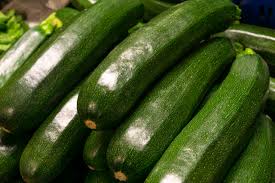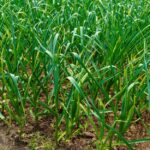Courgette farming in Kenya, also known as zucchini cultivation, has become a profitable agribusiness for farmers across the country. Belonging to the Cucurbitaceae family, courgettes are versatile vegetables prized for their nutritional value and adaptability to Kenya’s climatic conditions. Whether you are an aspiring farmer or looking to expand your agricultural portfolio, this guide will provide comprehensive insights into growing courgettes successfully.
Why Courgettes Are a Nutritional Powerhouse
Courgettes are loaded with essential nutrients that contribute to overall health. Their benefits include:
- Boosting Eye Health
Packed with zeaxanthin and lutein, courgettes help protect eyes from free radical damage and reduce the risk of age-related vision problems. - Strengthening Immunity
The antioxidants and anti-inflammatory compounds in courgettes fortify the immune system, helping the body fight diseases. - Supporting Heart Health
Courgettes are rich in magnesium, a mineral that reduces stress and lowers the risk of heart attacks. - Promoting Digestive Health
High fiber content improves gut health and prevents constipation. - Enhancing Adrenal Function
Vitamin C and polyphenols present in courgettes aid in maintaining hormonal balance and managing stress.
Popular Courgette Varieties in Kenya
Kenyan farmers have access to several courgette varieties, each suited for different needs:
- Simba F1: A hybrid variety with strong resistance to diseases.
- Cera F1: Known for its uniform growth and adaptability.
- Black Beauty: A classic variety with dark green skin and robust flavor.
- Ambassador F1: Ideal for export markets due to its long shelf life.
- Green Zucchini: Commonly grown for local consumption.
Ideal Growing Conditions for Courgettes
To achieve high yields, courgettes require specific ecological conditions:
- Temperature: Between 15-22°C.
- Altitude: Thrives at 500-2,000m above sea level.
- Water Needs: Requires 800mm of water during the vegetative stage.
- Soil Type: Prefers fertile, well-drained soil with a pH of 5.5-7.5.
Regions such as Kiambu, Bungoma, Narok, and Laikipia are well-suited for courgette cultivation.
Preparing Your Farm for Courgettes
Proper preparation ensures optimal growth and productivity:
- Clear the Land Early: Begin 2 months before planting to allow organic matter to decompose fully.
- Tilling: Loosen the soil to improve aeration and root penetration.
- Fertilization: Enrich the soil with manure and DAP fertilizer for a nutrient boost.
Planting and Propagation
Courgettes are propagated through seeds, which can either be directly sown in the field or raised in a nursery before transplanting.
Planting Guidelines:
- Spacing: Use a spacing of 60cm by 60cm to ensure proper airflow and sunlight penetration.
- Planting Depth: Sow seeds at a depth of 2cm.
- Germination Period: Seeds typically germinate within 5-7 days.
For transplanting, seedlings should have 3-4 leaves and be carefully placed into prepared holes.
Essential Farm Management Practices
To achieve high yields, implement the following practices:
Irrigation
Keep the soil consistently moist, especially during the planting and fruiting stages. In drier regions, consider drip irrigation for water efficiency.
Weeding
Regular weeding prevents competition for nutrients and reduces pest hiding spots. Use manual weeding or herbicides as needed.
Mulching
Mulching helps retain soil moisture and suppress weeds, creating a favorable environment for the plants.
Common Pests and Diseases
Pests:
- Aphids: Suck sap and cause curling of leaves.
- Cutworms: Damage young seedlings by cutting them at the base.
- Epilachna Beetles: Create holes in leaves, reducing photosynthesis.
- Red Spider Mites: Thrive in hot, dry conditions and cause discoloration.
Diseases:
- Anthracnose: Leads to sunken spots on fruits.
- Powdery and Downy Mildew: Fungal infections that weaken plants.
- Cucurbit Scab: Causes scabs on fruits, reducing market value.
- Mosaic Virus: Leads to stunted growth and distorted leaves.
Management Strategies:
- Practice crop rotation to break pest cycles.
- Use resistant seed varieties.
- Apply organic or chemical pesticides when necessary.
- Maintain strict field hygiene.
Harvesting Courgettes
Courgettes mature quickly, making them a lucrative option for farmers.
Harvesting Tips:
- Begin harvesting 2-3 months after planting.
- Pick fruits when they are tender and 15-20cm long.
- Use a sharp knife to cut fruits, leaving a 2-5cm peduncle attached.
Regular harvesting encourages continuous fruit production.
The Market Potential for Courgettes
Local Market:
Courgettes are in high demand in:
- Urban Supermarkets: Consumers prefer fresh, high-quality produce.
- Grocery Stores: Affordable options for everyday use.
- Hotels and Restaurants: Essential for salads and gourmet dishes.
Export Market:
Kenya exports courgettes to Europe, the Middle East, and Asia, where demand for fresh, organic produce continues to grow.
Value-Added Products:
To maximize profits, farmers can venture into:
- Frozen Courgettes: For retail chains and export.
- Courgette Chips: A healthier snack option.
- Courgette Flour: Gluten-free and popular among health-conscious consumers.
Challenges in Courgette Farming
While courgette farming is profitable, it is not without challenges:
- Pests and Diseases: Require consistent monitoring and timely intervention.
- Water Shortages: Limitations in arid and semi-arid regions.
- Market Dynamics: Prices fluctuate based on supply and demand.
- Lack of Training: Farmers without access to extension services may struggle with proper techniques.
Future Prospects of Courgette Farming in Kenya
The future of courgette farming is bright, thanks to:
- Increased Awareness: Rising demand driven by health benefits.
- Support Programs: NGOs and government initiatives offer training and financial assistance.
- Innovative Farming Methods: Adoption of greenhouse farming and drip irrigation boosts yields.
- Expanding Markets: Opportunities in processed courgette products.
Courgette farming in Kenya is a profitable venture for both small-scale and large-scale farmers. With proper planning, adherence to best practices, and exploration of value-added markets, farmers can maximize yields and profits. Whether you are growing for local consumption or export, courgettes offer a sustainable agribusiness opportunity.





